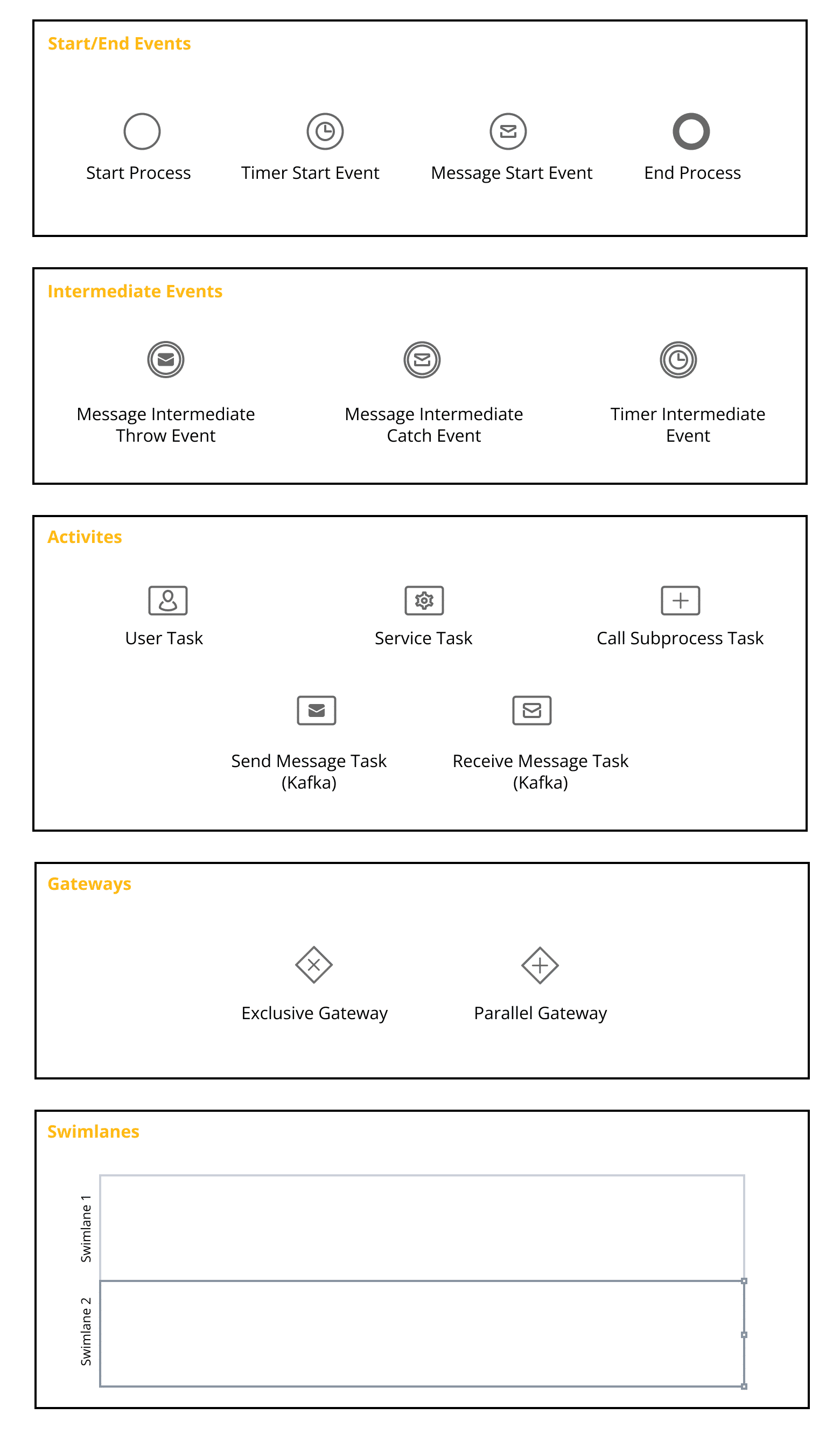BPMN nodes
A Business Process Model and Notation (BPMN) node is a visual representation of a point in your process. Nodes are added at specific process points to denote the entrance or transition of a record within the process.
For a comprehensive understanding of BPMN, start with the following section: Intro to BPMN.

FLOWX platforms support various node types, each requiring distinct configurations to fulfill its role in the business flow.
Types of BPMN nodes
Let’s explore the key types of BPMN nodes available in FlowX:
- Start and End nodes - Mark the initiation and conclusion of a process flow. A process definition may have multiple start nodes (each linked with a start condition) and end nodes based on the flow outcomes.
- Send Message and Receive Message tasks - Used for communication with external systems, integrations, and plugins.
- Message Events - Capture interactions between different process participants by referencing messages.
- Task nodes - Added when a business rule needs to execute during a process flow.
- User Task nodes - Configure the appearance and behavior of the UI and send data to custom components.
- Exclusive Gateways - Mark decision points in the process flow, determining the branch to be followed.
- Parallel Gateways - Split the process flow into two or more branches occurring simultaneously.
- Call Subprocess Tasks:
- Call Activity - Call activity is a node that provides advanced options for starting subprocesses.
- Start Embedded Subprocess - The Start Embedded Subprocess node initiates subprocesses within a parent process, allowing for encapsulated functionality and enhanced process management.
For comprehensive insights into BPMN and its various node types, explore our course at FlowX Academy:
BPMN 101
- What’s BPMN (Business Process Model Notation) and how does it work?
- How is BPMN used in FlowX?
After gaining a comprehensive overview of each node, you can experiment with them to create a process. More details are available in the following section:

